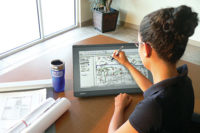These are some of the results of the poll of 2,056 adults surveyed online by Harris Interactive.
Less than half of Americans have installed a programmable thermostat (37 percent), sealed gaps in floors or walls around pipes or electric wiring (34 percent), installed low-flow faucets (29 percent), energy efficient windows (28 percent), or added insulation to an attic, crawl space, or accessible exterior windows (27 percent). And just one in 10 U.S. adults (11 percent) have conducted a home energy evaluation or audit.
There are certain regional differences as well. For example, over half of Southerners (55 percent) change their air filters monthly in comparison to just 27 percent of Easterners and 28 percent of Westerners.
One way utilities around the country are helping households control energy costs is with smart meter technology. Yet just one in five Americans (21 percent) say they have been contacted by their utility or co-op about this or other energy efficiency tools. It seems to be used more in the West as one-third of those living there (32 percent) have been contacted compared to just 16 percent of Midwesterners.
If they could control their home energy use and lower energy costs with a computerized dashboard in their home, almost half of Americans (48 percent) say they would be likely to install such a dashboard in their home, even with the understanding that they would have to proactively manage their energy use. Three in 10 (31 percent) are neither likely nor unlikely to install this and one in five (21 percent) are unlikely to do so. This likelihood is a little soft as just 13 percent are very likely to install this dashboard and one-third (35 percent) are somewhat likely to do so.
One reason this dashboard may work is that Americans would prefer to control their energy usage. If they were allotted a maximum amount of energy for daily use that varies during peak energy usage periods, seven in 10 U.S. adults (69 percent) would prefer to manage that energy distribution themselves while only 9 percent would prefer to have their utility manage their energy use; one in five (22 percent) are not sure.
In light of rising energy costs and increased pressure to make ends meet, American families are taking simple steps to be more conscientious about energy efficiency, noted Harris Interactive. But the challenging economy and the initial investment required is limiting how far families might be willing or able to go, pointed out Sarah Simmons, senior research executive and industry thought leader. Because of this, companies may need to think more creatively of ways to incentivize consumer behavior toward adoption of more energy efficient solutions.
Publication date: 05/07/2012









